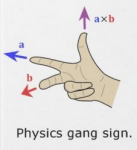- Location
- Placerville, CA, USA
- Occupation
- Retired PV System Designer
I just want to make one thing clear that has not been addressed in the body of this discussion:If Im here asking...obviously I'm not confident my electrical theory....power goes from circuit breaker....then through load....goes back on neutral to the utility transformer?
It is current that is flowing from the panel bus through the breaker to the load, through the load and back to the panel over one or more conductors.
Your choice of the word power instead of current leads to a statement that power flows out one conductor and back on another. This is totally incorrect and likely to confuse your apprentice.
Power is transfered whenever current travels through a region of changing voltage. The current flowing over two wires through a voltage drop like a resistor transfers power to the load. Both wires are equally involved.
When (conventional) current flows from a negative voltage point to a positive voltage point (such as the terminals of a battery or generator) power is transferred into the electrical circuit. Since one of Kirchhoff's laws tells us that the sum of voltages when traveling a closed path must be zero, we can see that power is transferred into and out of a circuit with no accumulation of power in the circuit itself.
I am not just trying to be pedantic here
It really makes a difference in a correct understanding of what happens, which will make things easier for your apprentice in the future.
In your example power goes into the circuit at the transformer and leaves it at the load. A circuit breaker, switch, or broken wire all prevent power from being transferred by preventing current from flowing. Power is not somehow sitting in waiting at the breaker, ready to go somewhere.
Sent from my Pixel 4a using Tapatalk




